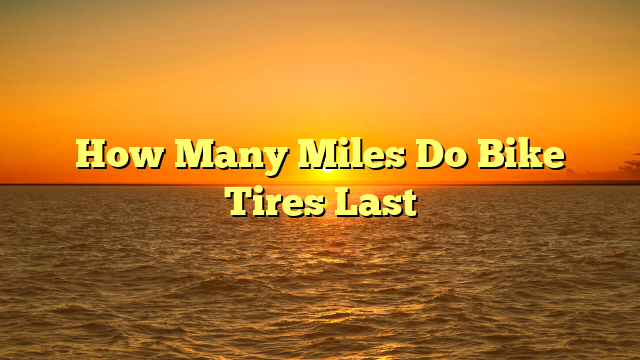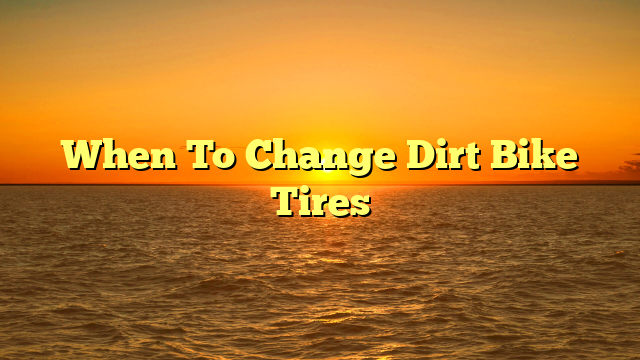Are you a cyclist wondering do tubeless tires need air?
If so, you’re not alone.
Many cyclists are curious about this topic, as tubeless tires have become increasingly popular in recent years.
The good news is that tubeless tires do indeed require air to function properly, and in this article, we’ll explain why and provide some tips for maintaining and optimizing your tubeless tire setup.

Table of Contents
Do Tubeless Tires Need Air?
Yes, tubeless tires need air to function properly.
The main difference between tubeless tires and traditional tires is that tubeless tires don’t require an inner tube to hold the air.
Instead, the air is held directly by the tire itself, which is designed to form an airtight seal with the rim.
Tubeless tires are designed to be used with sealant, which helps to prevent air leaks and punctures.
The sealant is added to the inside of the tire before inflation and helps to seal any small holes or cuts that might occur while riding.
However, the sealant alone is not enough to keep the tire inflated; air is still needed to create the pressure required to keep the tire in shape and provide a smooth ride.
Key Takeaways
- Tubeless tires do require air to function properly, and they are designed to be used with sealant to prevent punctures and leaks.
- Proper inflation is essential for ensuring a safe and comfortable ride, and it’s important to check the tire pressure regularly and replace the sealant as needed.
- Tubeless tires offer many benefits, including reduced risk of flats, better traction, improved rolling resistance, easy maintenance, and eco-friendliness.
- Common issues with tubeless tires include difficulty sealing, sealant drying out, burping, and messy installation.
- With proper installation and maintenance, tubeless tires can provide a smoother, faster, and more comfortable ride, making them a great option for serious cyclists.
Overview of Tubeless Tires
Before we dive deeper into the topic, let’s take a closer look at tubeless tires and how they work.
Tubeless tires are essentially tires without inner tubes.
Instead of the tube, the tire has a reinforced bead that forms a seal with the rim of the wheel.
The tire is then filled with air, and the sealant is added to the inside of the tire to help prevent punctures and leaks.
Tubeless tires are designed to run at lower pressures than traditional tires, which can provide several benefits.
For example, lower tire pressure can offer a more comfortable ride by absorbing more of the bumps and vibrations on the road.
Additionally, lower pressure can also provide better traction and handling, especially on rough terrain.
You may be interested in:
Understanding Tubeless Tire Inflation

Now that we know that tubeless tires need air, let’s talk about the proper way to inflate them.
- Gather Necessary Equipment: You will need an air compressor or a floor pump with a tubeless tire inflator, tire levers, and a valve core removal tool.
- Remove Valve Core: Using a valve core removal tool, remove the valve core from the valve stem.
- Install Inflation Valve: Attach the tubeless tire inflator to the valve stem and inflate the tire.
The inflator should have a valve that allows air to flow into the tire but not out, creating pressure.
- Inflate Tire: Use the air compressor or floor pump to inflate the tire to the recommended pressure, which should be written on the sidewall of the tire.
- Reinstall Valve Core: Once the tire is fully inflated, remove the inflator and reinstall the valve core.
- Check for Leaks: After inflating the tire, check for leaks by applying soapy water to the valve stem and any areas where the tire might be leaking air.
If you see bubbles forming, it means that there is a leak that needs to be fixed.
The pros and cons of tubeless tires versus traditional tires:
| Pros of Tubeless Tires | Cons of Tubeless Tires |
|---|---|
| Reduced risk of flats | Difficult to install |
| Better traction | Sealant can dry out |
| Improved rolling resistance | Burping can occur |
| Easy to maintain | Messy installation |
| Eco-friendly |
Benefits of Using Tubeless Tires
Now that we know how to properly inflate tubeless tires, let’s talk about the benefits of using them.
- Reduced Risk of Punctures: Tubeless tires are designed to be used with sealant, which can help prevent punctures from small objects like thorns and glass.
- Lower Tire Pressure: Tubeless tires can be run at lower pressures than traditional tires, which can provide a more comfortable ride and better traction on rough terrain.
- Better Handling: With lower tire pressure, tubeless tires can conform better to the road surface, providing better handling and control, especially when cornering or braking.
- Improved Rolling Resistance: Tubeless tires have lower rolling resistance than traditional tires, which can provide a faster and smoother ride, especially on smooth surfaces.
- Easy to Install: While the initial setup of tubeless tires can be a bit challenging, once the tire is installed, it’s easy to maintain and replace the sealant as needed.
- Eco-Friendly: Tubeless tires reduce waste by eliminating the need for inner tubes, which can be a significant source of waste in the cycling industry.

Common Issues with Tubeless Tires
While tubeless tires offer many benefits, they can also present some challenges.
Here are some common issues with tubeless tires:
- Difficulty Sealing: One of the main issues with tubeless tires is that they can be difficult to seal, especially during initial setup.
It’s important to follow the proper installation procedures and use the right sealant to ensure that the tire seals properly.
- Sealant Drying Out: Sealant can dry out over time, which can reduce its effectiveness in preventing punctures and leaks.
It’s important to check the sealant regularly and replace it as needed.
- Burping: Burping is when air escapes from the tire due to a sudden impact or compression, causing the tire to lose pressure.
This can be a safety issue, especially at high speeds, so it’s important to maintain proper tire pressure and avoid hitting large obstacles.
- Messy: Tubeless tires can be messy to install and maintain, as the sealant can spill or splatter during the installation process.
It’s important to wear gloves and work in a well-ventilated area to minimize the mess.
Useful Links:






